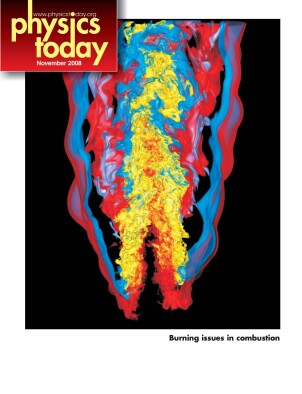Finding the Ωb − baryon
DOI: 10.1063/1.4796703
The Ω− baryon played an important role in the evolution of particle theory. Its much heralded discovery in 1964 at precisely the mass (1.67 GeV) predicted by symmetry arguments about charge and strangeness led promptly to the quark model of the strongly interacting particles. The quark model described the Ω− as a bound state of three strange (s) quarks. The relatively straightforward “naïve” quark model has long since been incorporated into quantum chromodynamics, a much more complete theory from which, however, precise predictions are notoriously hard to extract. But QCD does predict that the Ω− should have a heavy-quark analogue, called Ωb −, with a mass of about 6.0 GeV—more than six times that of the proton. In the Ωb −, one of the three s quarks is replaced by the much heavier bottom (b) quark. Now, having combed through 1014 proton–antiproton collisions accumulated at Fermilab’s Tevatron collider over the past four years, the collaboration that runs the collider’s DO detector complex has reported finding 18 events in which the expected decay of an Ωb − to an Ω− plus a charmonium meson is clearly discerned. The discovery was difficult not only because so very few collisions produce an Ωb −, but also because the newly discovered baryon is so short-lived that it moves only about a millimeter before decaying. The 6.1-GeV mass extracted from the observed events is reassuringly close to that predicted by the number-crunching lattice-gauge calculations to which QCD theorists have to resort. (




